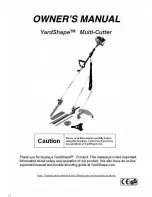
Figure 2 - Anchorage Locations
3.0 Application
3.1 Purpose:
The FallTech Contractor Leading Edge SRL-LE is designed to be used as a component in a Personal Fall Arrest System (PFAS),
to provide a combination of worker mobility and fall protection as required for inspection work, general construction, maintenance work,
oil production, confined space work, etc. The SRL-LE is intended for fall protection in Leading Edge applications where falls may occur over
edges.
3.2 Personal Fall Arrest System:
A PFAS is an assembly of components and
subsystems used to arrest a person during a fall event. A PFAS typically
consists of an anchorage, a deceleration device such as an Energy Absorbing
Lanyard (EAL), a Self-Retracting Device (SRD), or a Fall Arrestor Connecting
Subsystem (FACSS), and a properly fitted Full Body Harness (FBH). Maximum
permissible free fall in a typical PFAS is 1.8 m (6 ft). The SRD discussed in this
manual may be used in non-overhead anchorage situations. Clearance
calculators provided in this manual offer methods for calculating MRFC for
non-overhead anchorage locations when the SRD is set back from 0 m (0 ft)
to 1.2 m (4 ft) and non-overhead anchorage locations that are set back 1.5 m
(5 ft) or greater, see Figure 2.
1
Anchorage of SRD at Foot Level with 0 m (0 ft) Setback from Leading Edge
2
Anchorage of SRD at Foot Level with 1.5 m (5 ft) Setback from Leading Edge
3
Overhead Anchorage of SRD Above Dorsal D-Ring
4
Anchorage of SRD Above Dorsal D-Ring with 1.5m (5 ft) Setback from Leading
Edge
2.1 Canadian Standards Organization (CSA):
The Contractor SRL-LE described in this manual, when used per the instruction in this manual
meets or exceeds CSA Z259.2.2-2017. CSA requires that all SRDs be classified according to their respective type, and are classified either
as; Class SRL, Class SRL-R, Class SRL-LE, or Class SRL-LE-R. The Contractor SRL-LE Self Retracting Device in this manual is Class SRL-LE.
CSA Test Parameters used in this manual are:
The Arrest Distance is the total vertical distance required to arrest a fall. The Arrest Distance includes the deceleration distance and the
activation distance. The Average Arrest Force is the average of the forces applied to the body and the anchorage by the fall protection
system. The Maximum Peak Arrest Force is the maximum amount of force that may be applied to the body and the anchorage by the fall
protection system. In addition to the above tests conducted in ambient conditions, the units must be retested for average and peak forces
under certain environmental conditions, where the units are cooled, then tested, and saturated in water and tested again. Separate units
are used for each test. All test results are recorded.
This test data is then used to establish the basis for fall clearance guidelines published in the user instruction manual.
• Arrest Distance (AD)
•
Average Arrest Force (AAF)
•
Maximum Peak Arrest Force (MPAF)
3.3 Horizontal Lifeline (HLL) and Rail Systems:
The SRD may be attached to rigid and flexible anchors provided that all HLL or rail system
applications, installation, and uses are under the supervision of a qualified person.
3.4 Rescue:
Ensure a written rescue plan, method and system is in place and readily available for rapid response. Rescues may require
specialized equipment or measures. Rescue operations are beyond the scope of this manual. ‘
3.5 Application Limits:
The SRD discussed in this manual is designed for Leading Edge applications. However, take caution to avoid very
sharp edges such as sheared metals, metals cut with an abrasive disk, or flame-cut metals. Also take caution around very abrasive surfaces
and edges, such as concrete or stone, as these edges and surfaces may abrade the lifeline or the energy absorber during a fall event.
4.0 System Requirements
4.1 Capacity:
The SRD is designed for use by a single user with a combined weight of user, tools, clothing, etc., of 59 kg (130 lbs) to no
more than 140 kg (310 lbs).
4.2 Compatibility of Connectors:
Connectors are considered to be compatible with connecting elements when they have been designed
to work together in such a way that their sizes and shapes do not cause their gate mechanisms to inadvertently open regardless of how
they become oriented. Contact FallTech if you have any questions about compatibility. Connectors must be compatible with the
anchorage or other system components. Do not use equipment that is not compatible. Non-compatible connectors may unintentionally
disengage. Connectors must be compatible in size, shape, and strength. Self-closing, self-locking connectors are required by CSA.
022420
CMSRD08 Rev A
5






































